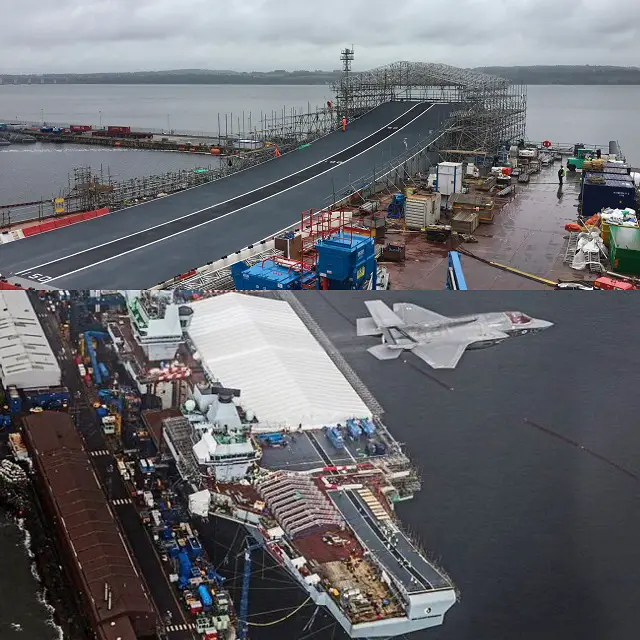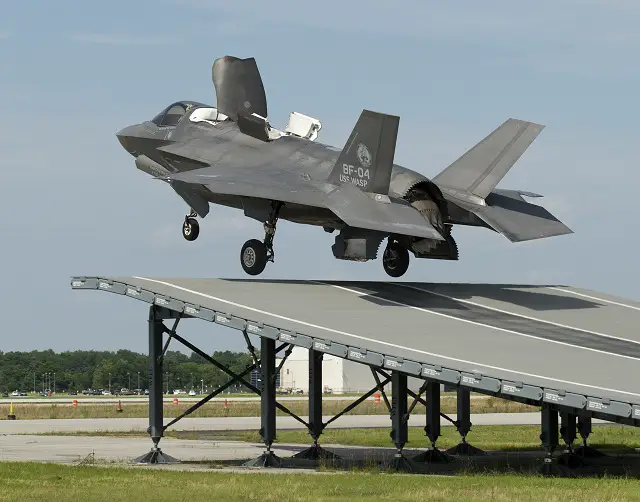Breaking news
Lockheed Martin Details How F-35B Will Work With Royal Navy Aircraft Carriers Ski Jumps.
| 2016
 Picture: HMS Queen Elizabeth twitter account |
|||
| The UK
will declare F-35 maritime Initial Operational Capability in 2020. When
the new carrier comes into service, the F-35B will dominate the skies
for decades to come. Squadron Leader Andy “GARY” Edgell, RAF,
is the first UK military pilot to complete a takeoff from the ski jump
with an F-35B. “The performance of the jet has been great. As the pilot, I have to do very little to accomplish a perfect ski jump takeoff,” commented Edgell. “I push the STOVL [short take off vertical landing] button to convert to Mode 4, push throttle to mil and use the pedals for minor directional inputs to remain on centerline.” The F-35B automatically positions the control surfaces and nozzles for takeoff, a unique capability compared with previous STOVL aircraft. Such automation frees up pilot capacity and provides an added safety enhancement. The aircraft treats the take off just like a regular short take off until it recognizes the six-degree per-second pitch rate and six-degree pitch angle about half way up the ramp. The horizontal tails and nozzle then automatically maneuver downward, and the vane box does not budge. The vane box sits directly under the lift fan and directs the airflow to allow for the proper lift off the surface. As the jet travels up the ski jump it automatically makes the necessary adjustments to the nozzle and control surface deflections. With the F-35 automatically adjusting for the optimum takeoff, the pilot is free to adopt more of a supervisory role, monitoring for any off-nominal behavior and ready to immediately take full control, if necessary,” said Edgell. “Virtue of the superb F-35 STOVL handling qualities, the low pilot workload during launch and recovery from an aircraft carrier enables the pilot to focus more on the operational task at hand and less on the administrative aspects of the flight.” The F-35B represents the first STOVL aircraft with the ability to go supersonic, and it will change the way the UK defends their country for many decades. The next phase of this testing will continue to expand the takeoff envelope and eventually add stores both internally and externally. Adding more stores highlights the advantage of using the ski jump as the weight increases to an eventual fully loaded F-35B. The testing at NAS Patuxent River is proving the F-35B can operate from a ski-jump carrier and be a powerful force for the UK when they begin deployments in the 2020s. |
|||



























